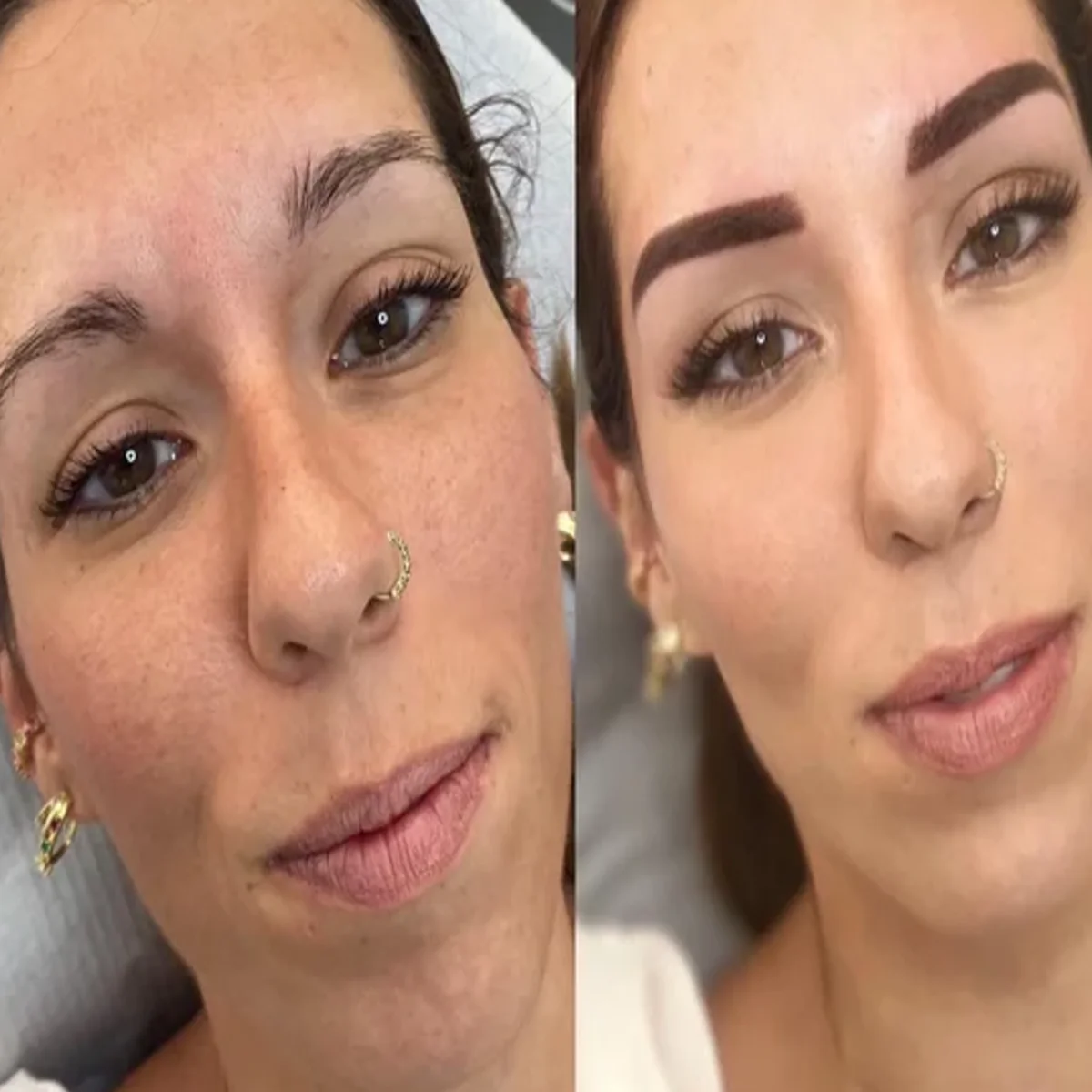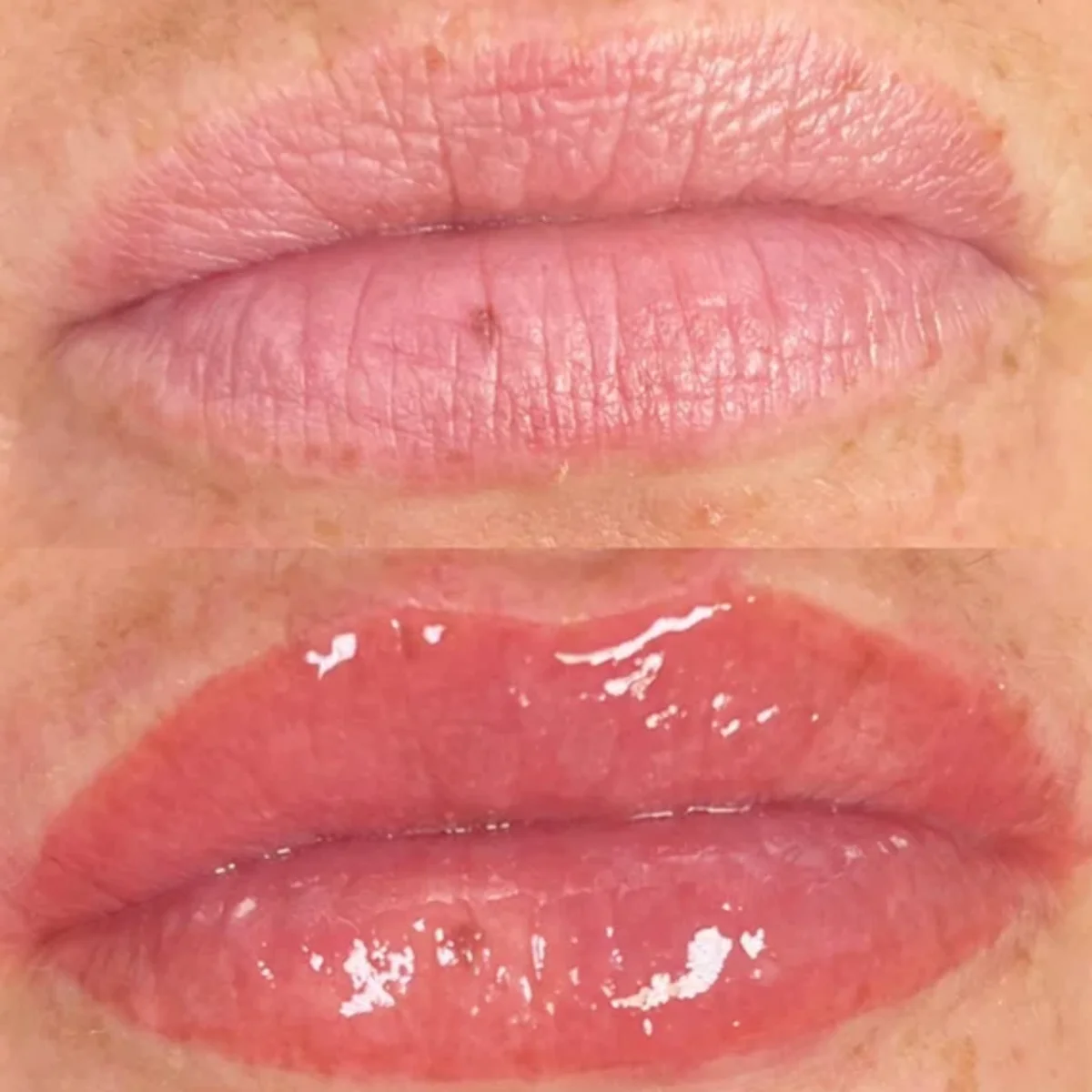Cosmetic tattooing provides semi-permanent makeup for eyebrows, eyeliner, and lips and the illusion of hair growth on the scalp. The focus is on achieving natural-looking results that complement your features.

Cosmetic tattoo use pigment instead of ink, which gives them a semi-permanent nature. Results can last for several years but will fade over time, allowing for adjustments during touch-up appointments to accommodate any changes in personal aesthetic preferences or features.
Learn what to expect from semi-permanent cosmetic tattooing
A personalized treatment plan will outline the steps necessary to achieve your desired results. Your treatment will be executed with meticulous attention to detail, and you will utilize techniques you will discuss and approve in advance.
Different areas can be treated with procedures such as feathering eyebrows, filling in gaps in the eyebrow, creating upper and lower eyeliner, adding colour to the lips, or performing micro-pigmentation on the scalp.
Following aftercare instructions will be essential for the healing process after receiving treatment. Some mild swelling may occur, but you should be able to return to your daily activities.
Your consultation
During the consultation, the features of the desired treatment area/s will be assessed, personal goals will be discussed, and any questions will be answered. A personalized treatment outline will be provided, outlining how the procedure will be performed and the expected results.
After the procedure, we will give you instructions on preparation and aftercare to ensure optimal skin support in the treatment area. Additionally, we will provide a quote to help you anticipate the costs associated with your treatment. The final cost may differ for each patient due to various factors, including the treatment area, treatment plan, and procedure duration.
Your results
Cosmetic tattoo can last several years before a touch-up may be needed to maintain their results. Over time, the pigment used in cosmetic tattoos will gradually fade, as it differs from the ink used in traditional tattoos.
The consultation will discuss expectations for results and the importance of clearly communicating goals and preferences. Patients are advised to be patient for any initial swelling and redness to subside after treatment.
Post Treatment Information
ALL PROCEDURES
- After the initial treatment, the treated area may appear darker and more precise. About 30% to 50% of the colour intensity will fade during the healing process, resulting in a softer colour.
- It is recommended to schedule a retouch appointment within four to eight weeks after the initial treatment, but never before. This allows for the healing process to be fully complete. During the retouching appointment, the practitioner can assess the colour and make any necessary adjustments. Any areas that have lost pigment or resisted the initial treatment will be retouched. If you do not schedule your retouch within eight weeks, you will be charged as per the initial treatment.
- It is recommended to avoid exposing the tattoo to the sun during the healing process, which typically takes seven to 10 days. After that, you can use sunscreen or cover the area in the sun to prevent fading.
- After the procedure, minor swelling may occur, but it should diminish within a few hours. To help reduce the swelling, you can apply an ice pack wrapped in a damp gauze and use aftercare cream.
- Avoid swimming in either chlorine or salt water for seven to 10 days or until the procedure area has fully healed.
- Avoid using saunas, spas, or tanning beds for seven to 10 days or until the procedure area has fully healed.
EYEBROW tattoos:
- After treatment, it is recommended to gently wipe away any lymph fluid on the eyebrows with a clean cotton pad for the first three hours.
- For optimal results, apply the recommended cream twice daily, making sure to remove any excess gel before reapplying for a total of seven days.
- Dry conditions in the area are recommended to be maintained for seven days.
- Avoid engaging in strenuous physical activity for the next 24 hours.
- To prevent liquid or shampoo from entering the treated area while showering, apply a small amount of the recommended cream.
- After treatment, it's recommended to avoid direct sunlight on the treated area for up to five days, as well as refrain from swimming or exposing the area to excessive heat (such as a sauna) for seven days.
EYELINER tattoos:
- Avoiding direct sunlight on the treated area for up to five days is recommended.
- Avoid swimming or exposure to excessive heat, such as in a sauna, for seven days.
LIP tattoos:
- Avoid strenuous physical activity for 24 hours after treatment. When showering, be cautious about getting liquid or shampoo on the treated area and consider using a small amount of the recommended cream.

SCALP MICROPIGMENTATION:
- Refraining from washing your hair for three days following treatment is recommended.
- It is recommended to avoid direct sunlight on the scalp for seven days.
- Avoid sweating on the scalp for seven days.
- Avoid contact with salt water or chlorine for a week.
Potential risks and complications associated with cosmetic tattooing.
Cosmetic tattoo, called micropigmentation or semi-permanent makeup, carries potential risks and complications.
Selecting a reputable clinic with qualified staff and strict hygiene protocols is crucial for reducing risks and complications associated with cosmetic tattoos. It is important to discuss your expectations, allergies, and medical history beforehand to ensure a satisfactory outcome. Following aftercare instructions diligently will also aid in a smooth healing process and minimize the risk of complications.
Some potential risks and complications may include:
- Proper sterilization and hygiene practices must be followed during the tattooing process to avoid the risk of infection.
- Some individuals may have allergic reactions due to the pigments used in cosmetic tattooing. Symptoms can include skin irritation, redness, swelling, or itching. Prior to the procedure, it is crucial to inform the technician of any known allergies.
- When an unskilled or inexperienced individual performs tattooing, the risk of obtaining unsatisfactory or uneven results increases. This may manifest as uneven lines, asymmetry, or incorrect colouration.
- Granulomas or nodules may form in rare cases as a reaction to tattoo pigment, resulting in small raised bumps at the tattoo site. It is important to seek medical attention if any unusual reactions occur.
- Individuals who tend to keloid or hypertrophic scarring may be more likely to develop raised and thickened scars at the tattoo site. Following proper aftercare instructions can help minimize this risk.
- The pigments in cosmetic tattooing may fade or change colour over time due to various factors such as sun exposure, skin aging, and individual skin characteristics. Periodic touch-ups may be necessary to maintain the desired colour intensity.
- Eyeliner tattooing poses risks related to the eye area, such as eye irritation, corneal abrasion, or infection if proper precautions are not followed during the procedure.
If you have any questions or concerns about potential complications, please discuss them during your consultation for further explanation. Personalized advice on risk prevention or minimization can also be provided.